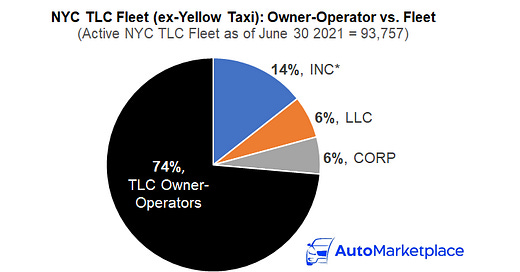Yellow Cab Crisis Attracts National & International Media Attention. Will the NYC Yellow Taxi Survive?
The yellow cab crisis is beginning to attract the attention of national and international news organizations, with Al Jazeera & Yahoo recently publishing articles on the topic
While many people in NYC, especially the TLC community, know the details of the yellow cab medallion debt crisis, it’s noteworthy that the story is getting some prominent national and international media attention. I say this because the more attention the story gets, especially from larger media outlets, the tougher it becomes for politicians/governments not to act. In addition, the story of the current crisis comes on the back of an already ongoing pre-pandemic crisis documented by the NY Times’ Brian M. Rosenthal, who won a Pulitzer Prize detailing the troubling backstory of medallion loans made to TLC drivers. A perfect storm hit the industry twice, first the rise of Uber & Lyft and now the pandemic. It inevitably leads to one question: Will the iconic NYC yellow cab survive?
As I’ve reported several times, the New York Taxi Workers Alliance (NYTWA), led by Bhairavi Desai, is lobbying for a debt restructuring plan that would cap all medallion loans at $125,000 and significantly reduce monthly debt payments for drivers. The plan will reportedly cost the City $75 million over 20 years. Currently, the plan has the backing of NY Attorney General Letitia James, City Comptroller (& mayoral candidate) Scott Stringer and Senator Chuck Schumer. Mayor Bill de Blasio maintains any potential deal is subject to NYC receiving financial aid, related to the COVID pandemic, from the federal government.
If the plan gets approved, which at this point I would be surprised if it didn’t, the question then becomes how does the yellow cab industry reinvent itself? Electrifying the fleet provides an interesting opportunity. Another solution proposed by City Council Member Ben Kallos to create one universal app is also interesting, but may not pass or be practical. Fundamentally, the yellow cab industry needs to address where is falls short vs. Uber and Lyft. In addition, it is also perhaps time to retire yellow cab medallions that are not being used, similar to how FHV licenses (aka TLC plates) fall off if active insurance isn’t maintained. Reducing the number of medallions should increase the value of the remaining medallions and bring supply and NYC street hail demand back into equilibrium.
I appreciate the first step is to get relief, but that relief must also come with a clear roadmap of how the yellow cab industry plans to reinvent itself. I personally think the NYC yellow cab will survive and I don’t just say that for nostalgia’s sake. There is and will always likely be an underlying demand for instant street hails (i.e. hand hailing) - whether that is 20% of the total market of 5% is to be seen. Finally, 20 years from now, when the last medallion loan payment would prospectively come due, will there even be a driver behind the wheel, perhaps it’s a driver-owned robotaxi? It’s hard to predict the near future and essentially impossible to predict how 10 or 20 years from now may look. If the yellow taxi industry wants to survive the future that plays out it must learn its lessons from the past and also try to recruit new talent to the industry that will help keep it modern and competitive.
AutoMarketplace NYC covers the for-hire transportation industry and automotive news. Check out AutoMarketplace on YouTube ▶️











The question is not whether taxi industry wants to survive the future that plays out, but whether the regulators are willing to equalize the rules everybody in NYC FHV industry must adhere to. Yellow medallion taxi owners have learned every lesson to be learned, however the regulations are standing in their way....and the modernization the author mentions definitely needed at the helm of the NYC Taxi & Limousine Commission which oversees the rules & regulations for FHVs.